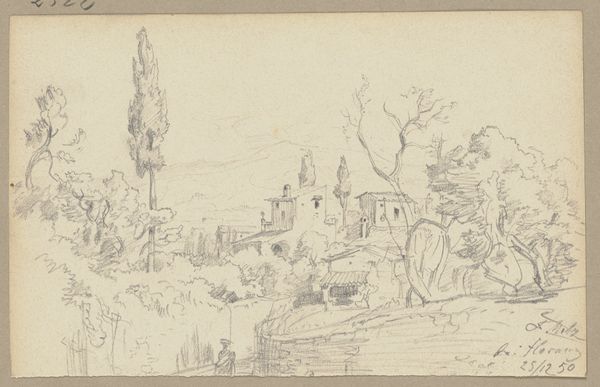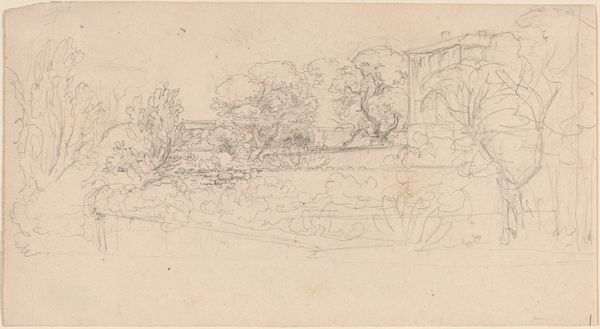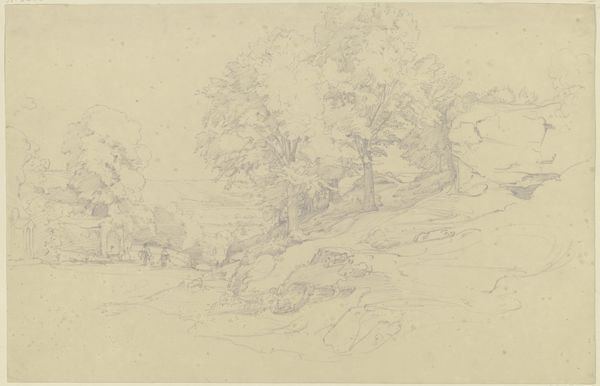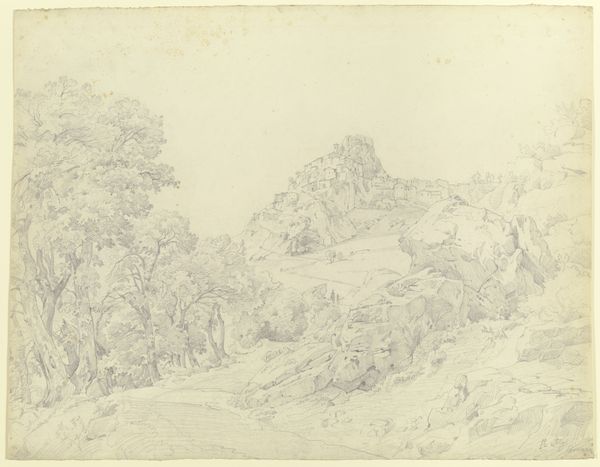
drawing, pencil, architecture
#
drawing
#
landscape
#
pencil
#
architecture
#
realism
Copyright: Public Domain
Editor: This is Friedrich Metz’s pencil drawing, "Landschaft, hinten rechts San Miniato al Monte in Florenz." It depicts a landscape, looking like it’s set in the countryside surrounding Florence, Italy. It feels serene and contemplative to me, like a moment captured in time. What do you see in this piece? Curator: I see this work engaging with the long tradition of landscape depiction, particularly as it reflects the 19th-century shift towards realism. Consider how the rise of industrialization and urbanization led artists to romanticize the countryside, and how this intersects with burgeoning national identities. Does this drawing operate within, or push against those boundaries, especially in its attention to specific locations? Editor: That's interesting. So, this seemingly simple landscape is actually commenting on societal changes? I hadn't considered the connection to industrialization. How does that manifest visually? Curator: Note the inclusion of San Miniato al Monte, a religious site, set against the "natural" landscape. Think about the power dynamics inherent in depicting religious or historical landmarks. What narrative is being constructed through the juxtaposition of these elements? How does this perspective legitimize or perhaps challenge existing power structures through landscape? Editor: I see your point. The church definitely adds a layer of meaning, hinting at a specific cultural identity. But isn’t it also just a picturesque view? Does all art have to be political? Curator: It's less about whether *all* art *has* to be political, and more about recognizing how art inevitably participates in a network of social and political meanings. Even in its pursuit of aesthetic beauty, it reflects certain values, ideals, and perspectives shaped by its historical context. Considering that context makes art richer, I think. Editor: I’m beginning to appreciate how even a landscape drawing can hold so much more than initially meets the eye. I never would have looked at it that way. Thanks for expanding my understanding of this piece! Curator: My pleasure! It's through these layered interpretations that we can truly appreciate the public role art plays in our culture.
Comments
No comments
Be the first to comment and join the conversation on the ultimate creative platform.













